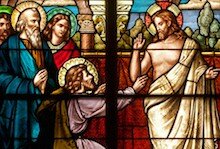
Stefano Dal Bianco was born on March 3, 1961 in Padua, where he lived until he moved to Milan in 1992. In addition to his work as a poet, Dal Bianco has a strong inclination for stylistic and formal literary criticism, and has written on 20th century authors (he is one of the foremost experts on the rhythm of Italian verse) as well as on contemporary poetry.
From 1986 to 1989, together with Mario Benedetti and Fernando Marchiori, Dal Bianco gave life to Scarto minimo, a contemporary poetry magazine that was one of the principal centres of generational debate for Italian poetry in the 1980s. He then worked in the editorial office of the monthly Poesia from 1992-1994.
He received his degree in History of the Italian Language from the University of Padua, where he studied with Pier Vincenzo Mengaldo. His thesis on Andrea Zanzotto was subsequently published in the volume Tradire per amore. La metrica del primo Zanzotto. 1938-1957, Lucca, Pacini Fazzi 1997. He also received a doctorate from the University of Padua in 1997, with a thesis on Ariosto’s hendecasyllable in Orlando Furioso.
Dal Bianco has published essays on Petrarch, Ariosto and on Italian poetry between the two world wars. He has also translated Shakespeare, W. Stevens, G. M. Hopkins, E.E. Cummings, M. Moore and the Dutch authors M. van Daalen and E. Spinoy. Currently he is a researcher in Literary Criticism and Comparative Literature at the University of Siena. He is also part of the editorial staff of the magazines il Gallo silvestre and Stilistica e metrica italiana. Dal Bianco’s poetry has been translated into Dutch, German, French and Serbian.
Stefano Dal Bianco is a man who watches himself live obstinately and painfully at all times. He thinks about himself, with the corrective of distinctly expressed family affection, as if he were considering his potential. This leads to two salient aspects of his book: the form of a diary or fragmented diary, and the continual use of the conditional. But the ‘diary’ is constructed with continual transitions between an essential prose made up of micro-events (a prose that is neither ‘poetic’ nor relevant to wisdom) and a poetry that is freely articulated: this often occurs within the same text, with striking effects of closure and ease, features that are unheard of in today’s poetry. And if introspection is the book’s fundamental attitude, the self, however, is situated in precise surroundings, which are always viewed slightly askance, such as the home, a room, or a even a window.
After all, it is the epochal contrast between city and nature that stands out, a contrast which Dal Bianco limits himself to stating without giving answers (as poetry should do); and it’s not that the city cannot squeeze out a few drops of happiness, even if freedom is to be found elsewhere. Dal Bianco is not an ‘ideological’ poet. Nor does he close himself off to hope, which as Kafka said, exists in infinite measure but not for us. And so, this is why the most recurring images are the ‘contemplative’ ones of the moon and of the colour blue, at times full and at times obscured. This poet who is so noteworthy does not resemble any of his colleagues today, above all because he is in no rush. Frugality and concentration are but the active face of the seriousness of his introspection.
First published as the introduction to Ritorno a Planaval
Bibliography
Poetry
La bella mano, Milan, Crocetti 1991.
Stanze del gusto cattivo, in Poesia Contemporanea. Primo quaderno italiano, Milan, Guerini e Associati 1991.
Ritorno a Planaval, Milan, Mondadori 2001 (winner of the following literary prizes: Carducci, San Pellegrino, San Domenichino, Metauro, Città dell’Aquila, Marineo, Elena Violani Landi, Caput Gauri).
Criticism
Tradire per amore. La metrica del primo Zanzotto. 1938-1957, Lucca, Pacini Fazzi 1997.
Profili dei libri e note alle poesie, in A. Zanzotto, Le poesie. E prose scelte, edited by S. Dal Bianco and G.M. Villalta, with two essays by S. Agosti and F. Bandini, Milan, Mondadori, 1999.
Ritmi e toni negli episodi del “Furioso”, in Stilistica e Metrica Italiana 1, 2001.
La struttura ritmica del sonetto, in M. Praloran (editor), La metrica dei “Fragmenta”, Rome-Padua, Antenore, 2003.
Poetics
Manifesto di un classicismo, in Scarto minimo 1, March 1987.
Materiali di una nuova lirica, in Scarto minimo 3, April 1988.
Fra la vita e la poesia, in Scarto minimo 5, June 1989.
Lo stile classico, in La parola ritrovata. Ultime tendenze della poesia italiana, edited by M.I. Gaeta and G. Sica, Venice, Marsilio, 1995.
Paper given at the conference Per la poesia, tra Novecento e nuovo Millennio, published in Letture, LII, May 1997.
Cinque pensieri, in Il gallo silvestre, 10, 1998.
Il suono della lingua e il suono delle cose, in L’indice, November 2002.







